The Nest
Le nid
Chase Joynt and Julietta Singh
2025
| 89 min
Documentary
English, Japanese, American Sign Language
Awards and Festivals
At the end of her mother’s life, decolonial writer Julietta Singh returns to say goodbye to her childhood home. As she digs into the history of the house, she uncovers 140 years of forgotten matriarchs and political histories she never knew. In this genre-defying cross-community collaboration, a single home is transformed from a place of siloed stories into a site of radical potential.
Trailer
Synopsis
At the end of her mother’s life, decolonial writer Julietta Singh returns to say goodbye to her haunted childhood home. As she digs into the history of the house, she uncovers 140 years of forgotten matriarchs and political rebels she never knew.
Singh teams up with acclaimed filmmaker Chase Joynt (Framing Agnes, No Ordinary Man) for a politically charged cross-community collaboration that deftly interweaves Indigenous, Deaf, Japanese and South Asian histories, all connected through the home.
A reckoning with memory, matriarchy and the enduring legacies of silenced voices, the film questions who gets lost in the archives of history, and what we stand to gain by resurrecting them. The Nest transforms a single home from a place of siloed histories into a site of radical collective potential.
Long synopsis
While growing up in an old Victorian mansion, Julietta Singh was certain her house was haunted. Mysterious footsteps, slamming doors, sudden gusts of wind all combined to give her childhood a gothic feel.
After her octogenarian mother falls down the stairs and is left disabled, Singh, now a decolonial scholar and writer, returns home to bid it farewell. Sensing her mother becoming one of the house’s ghosts, she sets out to find its other matriarchs, the spectres of her youth that she felt across time. What she discovers is an extraordinary archive of forgotten renegades and quiet rebels, hidden histories and silenced voices. All intimately connected over 140 years by the house.
Gracing its halls over time: a Métis revolutionary who founded the very hospital where Singh’s mother recuperates; a Deaf teacher who defied the ableist mandates of the era; the Japanese mother and daughter who lived there after wartime internment. And Singh’s own mother, a lifelong eco-feminist activist who raised mixed-race children.
In this deftly woven feature-length documentary, Singh teams up with acclaimed filmmaker Chase Joynt (Framing Agnes, No Ordinary Man) to co-direct a genre-defying cross-community portrait that challenges the settler colonial stories of belonging we’ve been taught. Common threads and uncanny coincidences emerge between the residents of “the nest” who’ve been forgotten, the women Singh comes to call her “brick and mortar kin.” As do the personal and political stakes of disability justice, interracial alliances and colonial resistance.
Expanding Joynt’s boundary-pushing documentary practice, Singh and Joynt invite their collaborators—descendants, activists and community members—to reanimate their histories and reclaim their places therein. Through the interweaving of these diverse stories, “the nest” is transformed from a place of siloed, silenced stories into a site of radical potential. By bringing these faded spirits into the spotlight, the film asks us to consider who gets lost in the archives of history, and what we stand to gain by resurrecting them.
One-liner
In a house full of secrets, centuries of forgotten matriarchs emerge to reveal untold stories of resistance and resilience.
Director's Statement - Julietta Singh
In 2018, my mother narrowly survived a life-altering fall down the stairs of my childhood home that left her physically disabled. She was 80 years old at the time and still running a four-star bed and breakfast in her home after an illustrious, decades-long career as a local ecofeminist activist. By then, she had lived in the house for 40 years and had devoted much of her life to restoring and preserving it. I often used to joke that she’d become so fully enmeshed with the place that I’d begun to see them as a single entity.
As a professor of postcolonial studies and a creative writer, my work explores the deeply political aspects of everyday life. I’m especially invested in rethinking questions of belonging within colonial and settler colonial spaces. And so, as I prepared to say goodbye to my maternal home, I began to research its history with the aim of situating my mother, and in turn myself, as part of its legacy.
What I couldn’t anticipate was the amazing set of resonant political histories and subjugated feminist and minoritized legacies contained within the house. The women of the past who emerged through my research quickly became my transhistorical sisters, aunties, mothers and grandmothers. Being a racialized child of immigrant parents, my whole understanding of home and belonging was suddenly shifting, as was my sense of ethical attachment and responsibility toward other communities whose marginalized histories were interwoven with mine.
As I was unearthing the extraordinary histories of forgotten renegades, radical matriarchs and diasporic homemakers, I reached out to community groups whose histories were, like mine, tied to the place. I excitedly shared the unravelling story with Chase, who immediately exclaimed, “This is my next film project!” And so began many years of experimental work that launched me into intimate collaboration with communities whose connection to me I had never known. Far from simply telling an alternative feminist history of my mother’s colonial home, Chase and I invited communities into our research process and back inside the house to reignite and reclaim their places there, and to create literal and creative space for our various pasts to converge.
In embarking on The Nest, we wanted to make a film that rediscovers and reshapes our collective sense of “home,” transforming it from a space of siloed personal history into a place of radical potential and historical possibility. And in doing so, we wanted to invite us all—especially those whose lives have been impacted by racism, sexism and ableism—to rethink how and to whom we belong.
Director's Statement - Chase Joynt
I’ve long been suspicious of documentary as a genre. Too often it has hinged on outsider portraits of difference, a cinematic form designed to educate and open viewers to “other” worlds. It was by questioning the power dynamics at stake in documentary filmmaking that I began as a young filmmaker to experiment with form. I wondered how non-fiction filmmaking might change if we set new terms not only for participation but collaboration. What would happen if we did not set subjects within predetermined frames but made documentary an invitation to explore representation itself?
My prior documentary work reckons with the ways the genre both enables and obscures the histories of transgender people. My foray into The Nest is one that extends from and evolves my past work. I’ve been a fan of Julietta’s transformative thinking since my very first encounter with her, and was transfixed by the stories she was uncovering about her childhood home! I knew instantly that my methodological approach to trans representation would dynamically align with Julietta’s decolonial approach to narrative, and specifically to her rethinking home not as a space of personal isolation but as an explosive archive of lost feminist histories. And I was ignited by the formal challenge of creating an alternative history of a nation by staying entirely contained in and around a single domestic space.
As soon as I had convinced Julietta that this was a film, we launched into a shared mission to create strong, multi-year bonds with organizations whose community histories all coalesce through the house: the Manitoba Métis Federation, the Manitoba School for the Deaf and the Japanese Cultural Association of Manitoba. It was a great honour to participate in a cross-community process that worked through collective historical research, extended conversations, cultural knowledge transmission and collective fabulation to create a communal and cinematic resurgence of lost feminist histories. As we approached production, our community collaborators took part in every aspect of the filmmaking—from the nuances of our historical subjects, to set design choices, to historically and culturally specific wardrobe, to those tiny cultural elements that each community knew in their bones should (or should not) appear on screen. So much intimacy and mutual care went into arriving on set that our film team often joked that we should have made a film about making our film!
The process and the product are for us reminders of what documentary can make possible—no longer the capturing of other people’s stories, but the weaving of our differences into something that begins to coalesce and reshape our sense of the world and its possibilities.
A Q&A with the Directors
Can you both speak to how this project came about, how it shifted from curiosity and a personal research project to something you wanted to work on and share with the world?
JS: As a nonfiction writer, my curiosity and personal research are almost always at risk of being shared with the wider world! But The Nest was a unique endeavor because it began as a reach for my mother. She was facing the end of her life at home after a disabling fall, and I wanted to learn more about the house’s long history to let her feel part of something bigger and wider than her personal struggles that were unfolding there. When I set out on the research, I couldn’t have imagined the unbelievable series of histories that were interwoven within a single house, almost none of which I had known when I lived there as a child. So it quickly became not only an intimacy project with and for my mother at the end of her life, but an undertaking that explored the erasures of women’s histories and minoritized legacies. I knew I wanted to share this core idea—that we live in places supersaturated with histories we’ve never learned, and that those histories are part of us even if we’ve never been taught them. The lingering question for me was how best to do that…
CJ: I had just finished my last feature when Julietta shared the research discoveries she was making about her childhood home, and I knew immediately it was grounds for an extraordinary film. The rich tapestry of stories in combination with Julietta’s striking and singular authorial voice felt like a really unique opportunity to explore where our creative practices aligned. The motivation to share the stories with the world was inseparable from one of our core project commitments: that the communities who had lived within the house, and therefore within the film, desired to participate, explore and be represented in this way. The film is made possible by and through a commitment to cross-cultural collaboration that extends far beyond what arrives on screen.
Something that’s (understandably) left out of the film is the full extent of the research you must have done. Can you describe what that actually entailed, at the very beginning, before you knew what you were looking for? Who do you call, what do you look up, how many rabbit holes do you go down? And how was it informed by your previous academic research and writing, or how did it differ?
CJ: This is very much Julietta’s question to answer, but allow me to say the research process was a truly extraordinary sight to behold!
JS: The project started virtually during the pandemic, first through conversations with my mother when we were separated by a closed border, and then through city and provincial archives. Once I had located the forgotten or under-acknowledged histories of the place, I turned to learning as much as I could about its matriarchs. I began to contact our collaborating organizations in an old-school way, cold calling them on the phone and saying, “I’m a writer who grew up in this house that is connected to your community’s history…” And every one of them—the Manitoba Métis Federation, the Manitoba School for the Deaf and the Japanese Cultural Association of Manitoba—met me with such energy and enthusiasm. They were completely on board with creatively reclaiming their histories, which really set everything in motion. The wealth of resources they each shared with us, from archival collections and oral histories to irreplaceable items, was incredible. We were all searching for our pasts together, webbing our siloed histories to tell a larger story.
In terms of rabbit holes, we discovered so much more than we were able to include in the film! Honestly, it was really painful to cull. In terms of women, we settled on the under-written matriarchs of the home, but of course other girls and women had been there in various capacities over time. And there’s some archival ambiguity over two neighbouring homes Annie built, both referred to as “the Bannatyne Residence.” One was a Scottish castle that was torn down in 1950 and the other, my mother’s home. Rather than lose my mind over which residence was which in the archives, I started to think about the two homes as one co-extensive space, the “little” one still standing and reminding us of its demolished architectural kin.
What motivated you to turn this into a documentary, rather than a book, essay, or other medium?
CJ: Much of my documentary work reckons with the archive and its erasures. While Julietta’s research process and emerging community connections were unlocking many un- or lesser-known histories of the house and its occupants, we knew from the beginning that there would be limits to these historical traces. Every block or end that we encountered required that we open the conversation back up with our collaborators, to co-create a new pathway in the film. This process included brainstorming sessions, historically informed imagining, and remaining open to narrative change over time. On the page, we could make these relationships through description and explanation, but on screen we can show how they sound, look and feel.
JS: I wouldn’t have imagined turning the project into a film were it not for Chase… We were in the world together and admired each other’s work, so I trusted his conviction! I had written about the complexity of my mother as both a parent and an activist, and about the house itself in my book The Breaks, a long letter to my daughter about race and mothering at the end of the world. But for The Nest, I wanted something more than the page… I wanted to enflesh these lost historical figures—to remember them by feeling their bodies moving through the spaces of my youth, and by inviting their communities and descendants inside to resurrect them. My investment from the start was in the abidingly collaborative nature of the project, whatever the formal outcome might be. This was a big leap for me, as an otherwise solitary writer! And Chase’s certainty that this was a documentary project already in the making felt right to me.
Documentaries and docuseries seem to be experiencing a bit of backlash regarding how subjects are treated and how their voices are heard—or distorted. You take a completely different approach to your subjects than, say, talking heads. Can you talk about the collaboration process?
JS: This is a Chase Joynt question if ever there was one!
CJ: Mainstream documentary practice has long been critiqued for its excavating and evacuating tendencies, which so often take (energy, experience, expertise) from subjects and offer very little (if anything) in return. One way to avoid this dynamic is to co-create expectations for participation from the beginning, and this required that we, as makers, remained open to transformation and revision long into the creative process. Because the stories were imagined with and alongside community members, we also engaged in a rigorous feedback process with collaborators and consultants so that there was appropriate permission, sign-off and endorsement throughout.
You incorporate historical figures in the doc but not using standard re-enactments. Can you speak to the inspiration for this approach, including how you worked with/directed/prepped the people who appear, as well as the costuming?
CJ: Our enduring collaboration with these artists was a real-time experiment in what we are calling re-embodiment, a necessary revision and reinterpretation of what might initially be understood as reenactment. Re-embodiment allows for a mode of collaborative meaning making with our participants that is otherwise evacuated from reenactment, which is a process that relies heavily upon the existence of an original citation. In this way, re-embodiment released us from the constraints of a specific archival past and invited a new form of cinematic cohabitation. We also applied this method to costume and production design by delving with our film team and collaborators into historically grounded yet imaginative pathways for animating the past in the present. The point was less to get it exactly right and more to build from what we had learned through research and community while leaving room to create together from the absences of that historical knowledge.
While this is fundamentally a political commitment, it is also an aesthetic one.
JS: One of the things I love about the film is that in both the Deaf school scenes and the Japanese mother-daughter scenes, Chase and I still have little idea of what is said on screen! Joanna had decided to focus her art lesson on thistle, drawing on a 19th-century education that would have integrated thistle’s physical characteristics and its medicinal properties. She did her own research, and arrived on set to teach, but what she taught the students we don’t know! Likewise, in the scenes with Junko and Johanna (who play Mrs. Okazaki and Masa), we wanted a feeling of maternal intimacy between a diasporic mother and daughter. In each case, we discussed at length the historical conditions of the time periods, the actor’s personal connections to their historical subjects and what kind of atmosphere we wanted to create. And then we set our actors free.
Nothing was scripted, including the amazing and totally wild historical recreation of the Métis collaborators at the dining room table! We put them in period clothing—very carefully created through consultation with the Louis Riel Institute and our incredibly talented costume designer, Tammy Joe—and we asked them to share amongst themselves whatever they wanted while we left the room. They connected deeply and intimately over their shared heritage and the uneven paths each of them had tread as Métis women, and suddenly they slipped into an impromptu mid-1800s scene, plotting to open the first hospital in Winnipeg and embodying the badass women they knew their grand-matriarchs to have been. Chase and I stood at the monitors in absolute awe…
I like to say that the film was an experiment in intimacy, a way of becoming friends with our ancestors across time and with each other across differences. “Directing” often felt more like opening doors and offering space for communities to animate vital parts of their histories.
In terms of the physical house itself, what kind of inspiration did you have aesthetically/cinematically, making it come alive and having it serve as the hub for all these different stories? (Other docs, movies, artworks, or crew’s background/vision.) What physical limitations or obstacles did you face, shooting there?
CJ: Some of the films we were watching really early on to think about the treatment of the house were 306 Hollywood, where Elan and Jonathan Bogarín treat their late grandmother’s home as a wild and wonderful archive, and Joe Talbot and Jimmie Fails’ breathtaking narrative feature, The Last Black Man in San Francisco, where racialized family histories and architecture are powerfully interwoven. For her approach to her elderly father, we also really adored the tenderness and innovation of Kirsten Johnson’s Dick Johnson Is Dead.
JS: We definitely struggled with our self-imposed formal challenge of remaining in one location for an entire feature. The aim was to see how much discarded or displaced history we could discover within and around a single home, but this makes the problem of visual claustrophobia very real! We were strategic with using portals and passageways to create spaciousness, shooting a substantial amount outdoors and employing a “ghost camera” approach to shoot from the POV of a wandering spirit, excellently rendered by our amazing cinematographer, Chris Romeike.
For me, the act of transforming my childhood home into an artistic space, a communal space, a space of historical wonder and connection, was magical. I’ll never see or feel the house the same way again. It’s given me an entirely different sense of what it means to come home.
Community Collaborators
The Manitoba Métis Federation (MMF) is the democratically elected National Government of the Red River Métis, also known as the Manitoba Métis. The Red River Métis are a distinct Indigenous Nation and people, with their own laws and democratic system of government, with which they became Canada’s negotiating partners in confederation and the founders of the Province of Manitoba.
mmf.mb.ca
The Manitoba School for the Deaf (MSD) is a pre-K–12 school offering both bilingual-bicultural and bilingual-bimodal programming. It is a cornerstone of recognition, acceptance and promotion of Deaf culture in Manitoba, with an emphasis on education’s vital role in supporting Deaf children.
msd.ca
The Japanese Cultural Association of Manitoba (JCAM) is a non-profit, charitable organization that serves as the representative organization for Japanese Canadians in Manitoba. Their mission is to educate the community about Japanese and Japanese-Canadian art, music, culture, language, heritage and history.
jcamwpg.ca
Poster
Excerpts
Excerpt 1 - The end of a maternal legacy.
Excerpt 2 - A surprising connection.
Excerpt 3 - A mother and daughter reclaimed.
Images from the film
Loading...
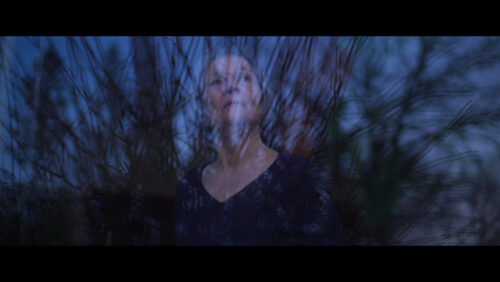
Download
Loading...
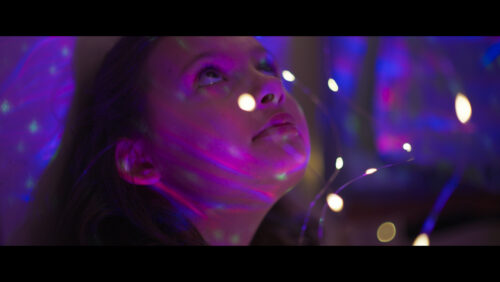
Download
Loading...

Download
Loading...
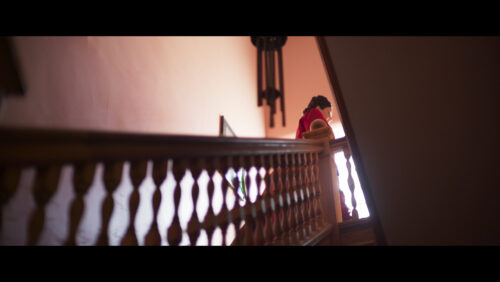
Download
Loading...
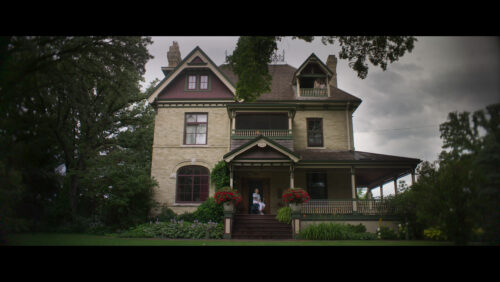
Download
Loading...
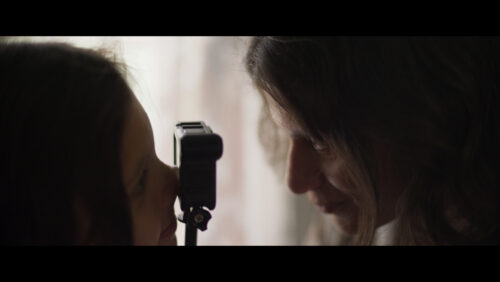
Download
Film Stills
Loading...

Download
Loading...

Download
Loading...

Download
Loading...

Download
Loading...

Download
Loading...

Download
Loading...

Download
Team
Chase Joynt
Director and Writer
Photo
Julietta Singh
Director and Writer
Photo
Alicia Smith
Producer
Photo
Justine Pimlott
Producer
Photo
Photo : Genevieve Caron
Chanda Chevannes
Executive Producer, NFB
Photo
Photo : Pasquale Marco Veltri
David Christensen
Executive Producer
Photo
Photo : Courtesy
Credits
Directed by
Chase Joynt
Julietta Singh
Written by
Julietta Singh
Chase Joynt
In Community with
The Manitoba Métis Federation
The Manitoba School for the Deaf
The Japanese Cultural Association of Manitoba
Produced by
Alicia Smith
Justine Pimlott
Executive Producers
Chanda Chevannes
David Christensen
Starring
Katherena Vermette as Annie Bannatyne
Joanna Hawkins as Mary Ettie McDermid
Junko Bailey as Mrs. Okazaki
Johanna Phillips as Masa Okazaki
With
Christine Common
and
Isadora Singh
Featuring
Katherena Vermette
Tamara Macpherson Vukusic
Kathryn Patenaude
Sierra Hill
Joanna Hawkins
Marden Klepka
Deidre Hase
Sarah Rabu
Keiko Miki
Yayoi Brandt
Students/Taiko Drummers
Aiden Coupland
Leane Dinglasan
Lyka Dinglasan
Milkala Flett
Xandria Griffiths
Nathaniel Legaspi
Ava May
Mikyas Rezene
Annie’s Grandkids
Benjamin Boulette
Ruby Daawnis Boulette
Japanese Tea Ceremony
Yuriko Mukumoto
Emi Furutani
Director of Photography
Chris Romeike
Editor
Pauline Decroix
Original Music
Justin Delorme
Sound Designer
Andy Rudolph
Production Designer
Chad Giesbrecht
Costume Designer
Tammy Joe
Narrator
Julietta Singh
Community Consultants
Yuhito Adachi
Junko Bailey
Joanna Hawkins
Art Miki
Jonathan Miller
Pam Okano
Sarah Rabu
Katherena Vermette
Tamara Vukusic
ASL and Captioning Consultants
Shannon Graham
Joanna Hawkins
Marden Klepka
Sarah Rabu
Line Producers
Andrew Martin-Smith
Mark Wilson
Senior Production Coordinator
Melissa Paduada
Production Supervisors
Marcus Matyas
April Dunsmore
Production Coordinators
Lee Clapp
Brooke Fishwick
Calvin Serutoke
Studio Operations Managers
Devon Supeene
Mark Wilson
Studio Administrators
Andrew Martin-Smith
Devon Supeene
Adrianna Marling
Legal Counsel
Christian Pitchen
Studio Technician
Q’Mal Labad-Workman
Studio Coordinators
Victoria Anderson-Gardner
Calvin Serutoke
Production Manager
Boeseya Petra
First Assistant Director
Rosalee Yagihara
Second Assistant Director
Jasmin Chong
Sound Recordist
John Hildebrand
1st Assistant Camera
Tony Truong
Ash Tailor
2nd Assistant Camera
Marco Pe
Digital Imaging Technician
Astor Fenoglio
Gaffer
João Holowka
Key Grips
Lorne Bailey
Bruce Claydon
Set Decorators
Rachel Kendall
Robb Paraskevopoulos
Props Master
Olivia Medeiros
Hair and Makeup Artist
Brie Tait
Hair and Makeup Assistants
Brenda Johnson
Karen Krabbenhoft
Costumers
Cassandra Guevara-Clark
Sook Hyun Kim
Costume Assistants
Ann Park Peters
Michelle Boulet
Kimono Dresser
Alison Adachi
Kimono Stylist
Kumiko Lucy Yamashita
Sewers
Bernarda Antony
Ariel Hansen
Kitty Yu-Chu Huang
Métis Beader
Amy McPherson
Original Métis Beading Courtesy of
Jennine Krauchi
Tea Ceremony Advisors
Yuhito Adachi
Sachiko Ohno
Ikebana Specialist
Debbie Tsuyuki
Printmaking Consultant
Sean Mclachlan
Letterpress Platemaking
Printmonger Press
Jackson Beardy Artworks
Permission courtesy of Paula Beardy with blessings from Byron Beardy and Lorraine Flett
Masa’s Dance Music
シャロックNO.1(Sharock No.1)
(Kazumi Yasui, Nii Yifang)
© Watanabe Music Publishing Co., Ltd.
℗ 1968, Victor Records
Taiko Practice Song
Tobu! by Hinode Taiko Inc.
Taiko Drumming Instructors
Deidre Hase
Marden Klepka
Taiko Drumming Coaches
James Coleman
Michaela McKennitt
Margaret McKenty
Taiko Drums Courtesy of
Hinode Taiko Inc.
ASL Interpreters
Shannon Graham
Landon Cormack
ECCOE Interpreting Agency
Cindy Boscow
Rachel Braul
Mandy MacDonald
Tessa Rogowski
Brittany Toews
Production Assistants
David Chenier
Adriana King
Colten Matousek
Marco Pe
Boom Operator
Dallas Pomedli
Additional Sound Recordist
Toby Zheng
Locations Coordinator
Neal Baksh
Driver
Brandee Froese
First Aid and Craft Service
Amy Walker
Drone Services Provided by
Drone Manitoba
Drone Pilot
Ryan Cheale
Stills Photographer
Steve Ackerman
Catering
Lewis Kitchen
Security Coordinator
Brent Yorke
Security Watchpersons
Douglas Monkman
Joseph Myles
Eyassu Tadesse
Online Editor
Serge Verreault
Visual FX Artist
Alain Ostiguy
Re-Recording Mixer
Isabelle Lussier
Foley and Sound Effects Editor
Kelsey Braun
Dialogue Editors
Lucas Prokaziuk
Andy Rudolph
Technical Coordinators
Luc Binette
Kevin Riley
Lyne Lapointe
Assistant Editors
Meraj Badiuzzaman
Verona Choi
Phillip Hawkes
Musicians
Julie Penner
Natanielle Felicitas
Jason Tait
Narration Recording
Cole Roberts
Spacebomb Studio, Richmond VA
Graphic Design and Titles
Dylan Haley
Transcription
Pat Garry
Mina Christine Yoon
Subtitles
Power of Babel
Senior Marketing Advisor
Jamie Hammond
Marketing Coordinator
Jolène Lessard
Publicist
Jennifer Mair
Archival Researchers
Emma Brunet
Tanya Fleet
Nancy Marcotte
Katherine Milazzo
Archival Material Courtesy of
CBC Archive Sales
CBC Licensing, Muddied Water Podcast
City of Vancouver Archives, AM1584:CVA 7-122
City of Vancouver Archives, AM1584:CVA 7-129, Luke Quiney
Japanese Cultural Association of Manitoba
Library and Archives Canada
Library of Congress, Preservation of the Sign Language by George W. Veditz
Manitoba School for the Deaf
National Film Board of Canada
Julietta Singh
Vancouver Public Library Special Collections, Leonard Frank
Tamara Macpherson Vukusic
Winnipeg Free Press
Filmed on location in Winnipeg, Canada, the ancestral lands of the Anishinaabeg, Cree, Oji-Cree, Dakota, and Dene peoples, and on the homeland of the Métis Nation.
A production of the National Film Board of Canada
Media Relations
-
About the NFB
For more than 80 years, the National Film Board of Canada (NFB) has produced, distributed and preserved those stories, which now form a vast audiovisual collection—an important part of our cultural heritage that represents all Canadians.
To tell these stories, the NFB works with filmmakers of all ages and backgrounds, from across the country. It harnesses their creativity to produce relevant and groundbreaking content for curious, engaged and diverse audiences. The NFB also collaborates with industry experts to foster innovation in every aspect of storytelling, from formats to distribution models.
Every year, another 50 or so powerful new animated and documentary films are added to the NFB’s extensive collection of more than 14,000 titles, half of which are available to watch for free on nfb.ca.
Through its mandate, its stature and its productions, the NFB contributes to Canada’s cultural identity and is helping to build the Canada of tomorrow.